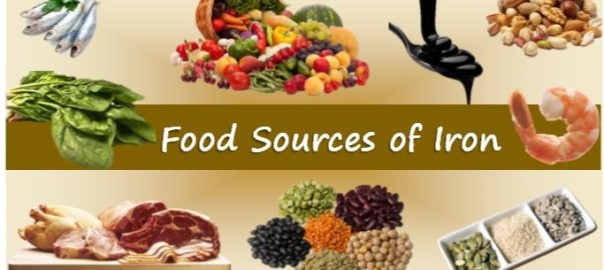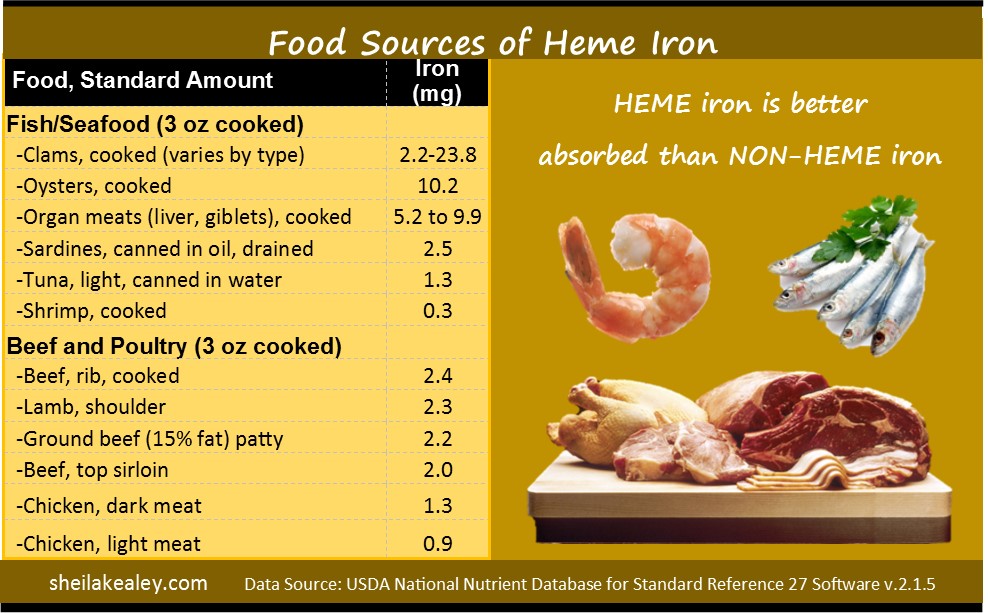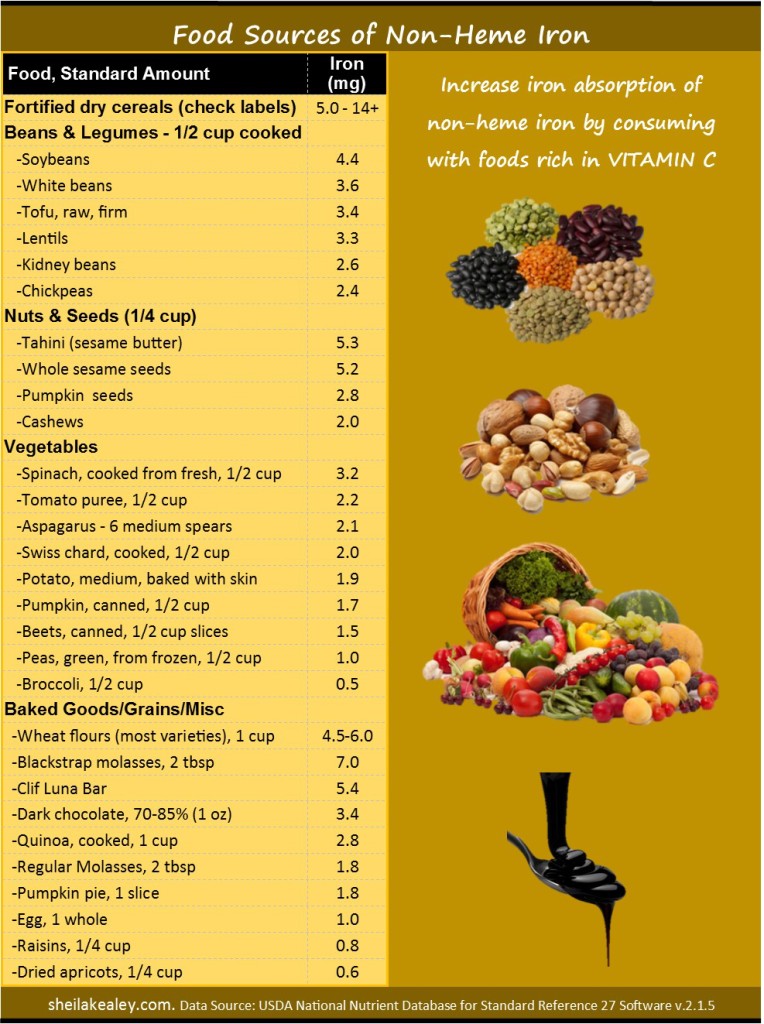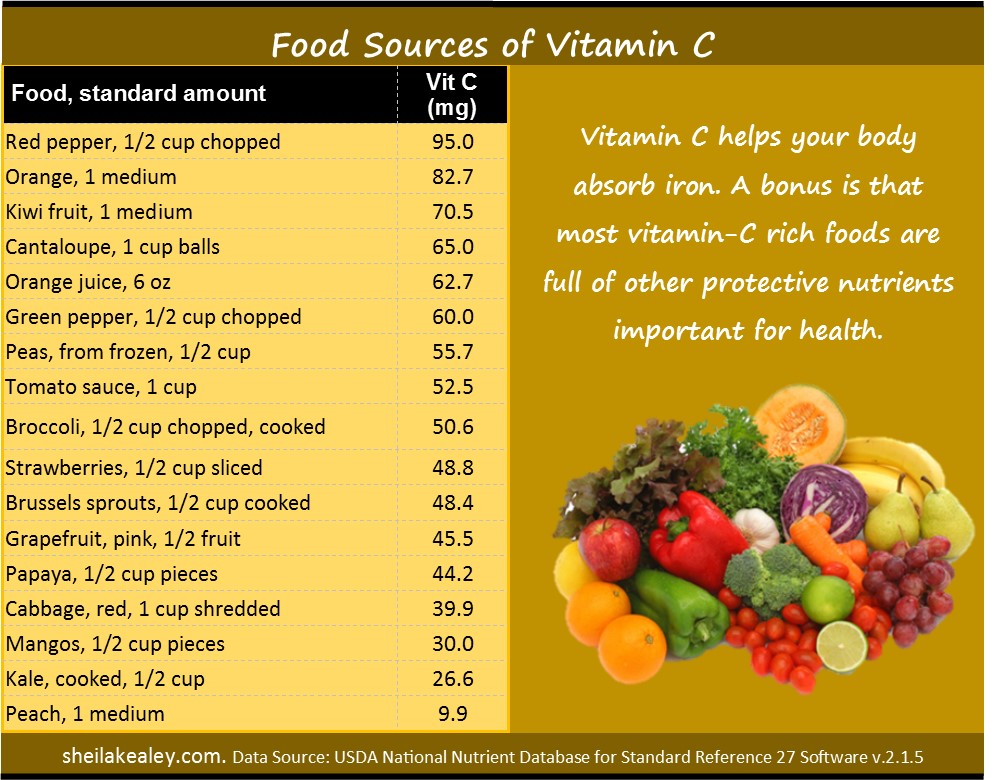Are you trying to add more iron to your diet? Studies show that many teens and women don’t consume enough iron-containing foods, and this is an important contributor to iron deficiency. Knowing which foods contain iron and the best ways to absorb the iron can make a big difference.
Iron is essential for life – every cell in your body needs iron to function. Iron is part of hemoglobin in blood and myoglobin in muscles, helping deliver oxygen to cells. The following information will let you know how much iron you need, and the best ways to get iron from your diet. (If you are an athlete concerned about iron intake, this article contains additional information pertinent to athletes, and information about supplements.)
How Much Iron Do I Need?
The Recommended Dietary Allowances for daily iron intake are as follows:
-
Females 14-18 yrs: 15 mg
-
Females 19-50 yrs: 18 mg
-
Females 51+ yrs: 8 mg
-
Males 14-18 yrs: 11 mg
-
Males 19+ yrs: 8 mg
Who Needs More? Vegetarians and vegans should try to consume more iron (up to 1.8 times more), as these recommended intakes are based on the assumption that at least 10% of iron intake is from heme iron; female athletes engaging in weight bearing activities (i.e., runners) should also try to consume more iron to account for iron losses due to foot strike; pregnancy increases demands to 27 mg.
Getting Enough Iron with
a Healthy Diet
TO INCREASE YOUR IRON STORES, you should consume a healthy diet that includes a wide variety of iron-containing foods. Foods contain two types of iron: heme iron is found in red meats, fish, and poultry, and non-heme iron is mostly from plant sources (enriched and whole grains, beans, nuts and some vegetables and fruit) as well as eggs and dairy products. About 60% of the iron in meat is non-heme.
The following charts lists FOOD SOURCES OF HEME AND NON-HEME IRON.
How to Figure Out the Iron Content
Based on Food Labels
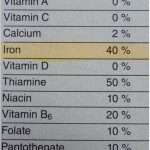 Figuring out the iron content of foods based on food labels is tricky. Although iron requirements vary by age and gender (and pregnancy, athletic, and vegetarian status), the Nutrition Facts Table for foods only has one value for iron. You need to look at the % daily value panel, and know what value it is based on:
Figuring out the iron content of foods based on food labels is tricky. Although iron requirements vary by age and gender (and pregnancy, athletic, and vegetarian status), the Nutrition Facts Table for foods only has one value for iron. You need to look at the % daily value panel, and know what value it is based on:
- In Canada, this is based on 14 mg iron (so 50% daily value means 1 serving contains 7 mg iron);
- In the US this is based on 18 mg iron (so 50% daily value means 1 serving contains 9 mg iron).
Iron Absorption
How well you absorb iron might be as important as the amount that you consume. But iron absorption is a complex phenomenon: your body only absorbs about 10-15% of the iron you eat, and the amount of iron you absorb from a food is influenced by (1) your body iron status; (2) the type of iron (heme iron is better absorbed than non-heme iron); (3) iron inhibitors; and (4) iron enhancers.
Iron Inhibitors are substances in foods that interfere with iron absorption (especially non-heme sources of iron). These include
- Calcium, dairy products, and eggs.
- Oxalates found in spinach, kale, beets, nuts, chocolate, tea, wheat bran, rhubarb, strawberries, and some herbs.
- Polyphenols – antioxidants found in some cereals and legumes, most fruits and vegetables, cocoa, coffee, tea (black, green, and herbal), some spices, and wine.
- Phytates – antioxidant compounds found in nuts, seeds, grains, soy proteins, and legumes.
You’ll notice that this list includes many healthful foods, and the health consequences of limiting or avoiding these foods (not to mention meal-planning headaches) likely outweigh the possible iron boosting benefits of avoiding them. My advice? Focus on Iron Enhancers.
Iron Enhancers
- Vitamin C helps your body absorb iron, and overcomes the negative influence of iron inhibitors. Some studies estimate that Vitamin C can increase iron absorption as much as four times. Try to include a vitamin-C rich food with meals and snacks. A bonus is that most vitamin-C rich foods are full of other protective nutrients important for health.
This chart lists FOODS RICH IN VITAMIN C.
- Eating heme iron-rich foods with non-heme-iron rich foods helps increase iron absorption (for example, adding a small amount of meat to chili will help you absorb more iron from the beans).
- Carotenoids (beta-carotene, lutein and zeaxanthin – found in brightly-colored fruits and vegetables like carrots, greens, sweet potatoes, red peppers, cherries, cantaloupe, oranges) improve iron uptake and help overcome the effects of iron inhibitors.
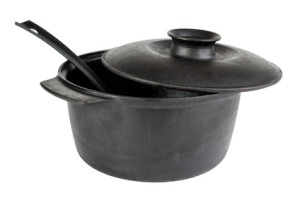 Cooking in cast iron can increase the iron content of food, especially acidic foods (i.e., tomato sauce). Studies have found that the iron content of cast-iron cooked foods was 2 to 12 times higher than foods cooked in other types of pots: more acidic, high moisture foods and longer cooking times results in more iron leaching into foods. One study estimated an increased daily iron intake of 14.5 mg for adults and 7.5 mg for children eating foods cooked in cast iron pots. (Cast iron is great for other reasons too!).
Cooking in cast iron can increase the iron content of food, especially acidic foods (i.e., tomato sauce). Studies have found that the iron content of cast-iron cooked foods was 2 to 12 times higher than foods cooked in other types of pots: more acidic, high moisture foods and longer cooking times results in more iron leaching into foods. One study estimated an increased daily iron intake of 14.5 mg for adults and 7.5 mg for children eating foods cooked in cast iron pots. (Cast iron is great for other reasons too!).
Designing Meals and Snacks
to Maximize Iron Absorption
A main focus should be to include vitamin-C rich foods with your meals and snacks. Here are some other tips and meal ideas:
- A burrito or Mexican-inspired meal containing beans and rice with salsa and sweet peppers is a delicious iron-rich vitamin C combination. Add a little lean beef or chicken to increase the iron content even further.
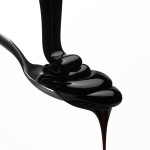 Bake with Blackstrap Molasses – it’s full of all the good stuff that’s left behind after processing sugar cane into sugar, including lots of iron and other minerals like calcium, magnesium, and potassium. Some people add 1 tbsp. to water or milk. A little can add a rich flavor to baked goods like yeast breads, quickbreads and muffins (I use 3-4 tbsp. for baking a large loaf of whole wheat bread). The flavor is intense – so experiment with just a little at first.
Bake with Blackstrap Molasses – it’s full of all the good stuff that’s left behind after processing sugar cane into sugar, including lots of iron and other minerals like calcium, magnesium, and potassium. Some people add 1 tbsp. to water or milk. A little can add a rich flavor to baked goods like yeast breads, quickbreads and muffins (I use 3-4 tbsp. for baking a large loaf of whole wheat bread). The flavor is intense – so experiment with just a little at first.- For a pre- or after-workout snack, try trail mix with iron fortified cereal (shreddies/oat squares), dark chocolate, and dried fruit with vitamin C (mango, papaya, apricot) to increase iron absorption.
- Enjoy an iron-fortified breakfast cereal with fresh berries and milk or yogurt. This is a great post-workout snack too because it includes carbs and a bit of protein. Low-sugar/whole grain varieties are your best bet.
- Top a spinach salad with vitamin-C sources, like strawberries, or mandarin oranges, and peppers (all rich in Vitamin C).
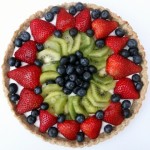 Finish off a meal with a vitamin-C rich fruit tart (try my recipe!) to improve the iron absorption of your meal.
Finish off a meal with a vitamin-C rich fruit tart (try my recipe!) to improve the iron absorption of your meal.- Add red peppers to any meal – they are the leading source of vitamin C to help iron absorption and full of other nutrients. Eat raw as a snack, add slices to sandwiches and wraps, dip into hummus, or cook into omelets, soups, and stews.
- Here are 28 iron-rich recipes from my favourite cooking magazine Eating Well.
Including iron-rich foods in your meals and snacks along with healthful foods that help iron absorption should help you get enough of this important mineral. If dietary efforts aren’t sufficient, consult your physician about iron supplementation. If your iron stores are normal, there is little robust evidence to suggest that taking iron supplements will improve aerobic capacity or reduce fatigue. In fact, this practice is risky because excess iron is associated with health problems.
Share This: